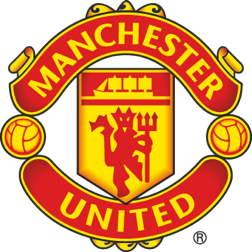Youth, courage, success – what it’s all about
We have been enthralled this summer by the lively pre-season performances of Anthony Elanga and Facundo Pellistri. When the season proper begins, we as Manchester United fans will be equally excited to see Mason Greenwood kick on as we will to see Jadon Sancho pounding down the Old Trafford wing.
These are vibrant, fearless players who may have come through the Academy or been brought to the club from near and far, but all share the same characteristics and ideals.
The ‘Mancunian Way’ is difficult to define or quantify. My colleague Joe Ganley attempted to interpret what it means to him, and how it connects to the United DNA, a couple of weeks ago. Ultimately, it’s a matter of what is at the heart of this club. The answer, for me, is youth. It’s the precocious drive, energy and flair that have driven Manchester United for the past century.
That has come in the form of a fresh-faced, ambitious Matt Busby in his army uniform, or a buoyant, fired-up Alex Ferguson off the back of taking Scotland to the 1986 World Cup. It’s been manifested on the pitch by a baby-faced Ole scoring in Barcelona, Portugal and England’s best talents of a generation coming together to achieve European glory in Moscow or Brian Kidd celebrating his 19th birthday by winning the European Cup at Wembley. The Class of 92, Best, the Babes…
Adidas’ new away kit for the 2021/22 season harks back to those ideals, our kit manufacturer saying they have taken inspiration from the ‘iconic’ design of our acid house 1992 strip as well as the striking royal blue of Kidd’s shirt in 1968.
That 1992 strip screams of the ‘90s in its outlandishness and eccentricity. As football entered a new era, kits and teams alike did what they could to stand out and push themselves to the front of the crowd. While Adidas offered a strip for the ages, Alex Ferguson’s United combined youth and class. That is what United have long been about.
There are, of course, the big-name signings, players who join at their peak, players like Raphael Varane or Steve Bruce, Dimitar Berbatov or Dwight Yorke, Bryan Robson or Bruno Fernandes. But the foundations upon which every United team of note has been built is youth.
This summer, it’s true once again. Elanga and Pellistri offer excitement with their directness in pre-season and in the transfer market, Solskjaer has followed the example of Ferguson and Busby in making sure England’s brightest young talent is at Old Trafford. Jadon Sancho is a player who draws you to the edge of the seat until you find yourself leaping upwards in celebration. He is not a product of the United Academy, but he fits the bill.
Sancho will play with Mason Greenwood and Marcus Rashford just as Bobby Charlton and Duncan Edwards played with Tommy Taylor, as Brian Kidd and George Best played with Denis Law, as Giggs, Scholes and Beckham played with Keane, Cole and Solskjaer.
Tenacious and hard-working, club secretary Walter Crickmer toiled throughout the 1930s to found the Manchester United Junior Athletic Club (MUJAC). Since its inception, an eclectic blend of homegrown youth and young signings from elsewhere has led United to success. The running tally of consecutive first-team squads with an Academy graduate now stands at 4,097, with 243 different players having made it through the system to make a first-team debut - Crickmer’s vision and dream is still alive and kicking.
The ‘90s version of this new blue and white away strip could be seen all around the old Wembley in April 1992. United beat Nottingham Forest 1-0 to win the League Cup. Academy boy Ryan Giggs, aged 18, started and so did Andrei Kanchelskis, 23, signed a year prior from Shakthar Donetsk. The Russian winger was replaced in the second half by Lee Sharpe, 21, brought in from Torquay as a 17-year-old.
United would soon win titles again, the next year in fact, but by the middle of the decade, Ferguson eyed a rebuild, and in came Beckham, Scholes, Neville and Butt. When they did, Roy Keane was a central figure in the team. The Irishman played against United in that League Cup final for Forest and signed 15 months later, aged 21.
Everyone at Manchester United knows that the commitment to youth is not merely a tradition kept for tradition’s sake but the heartbeat of the club, a well-established blueprint for success that has long accompanied the Reds at home, and away. Long may it continue.




